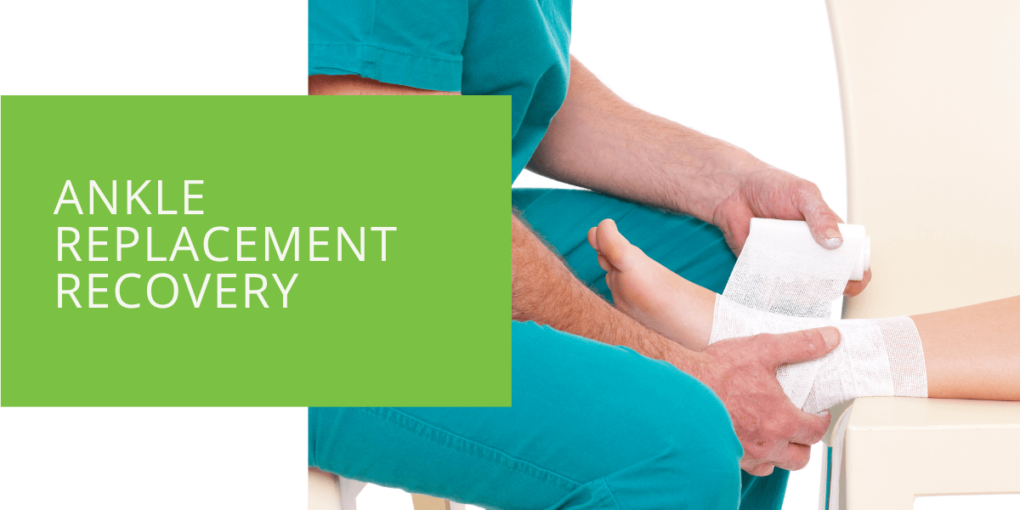Ankle Replacement Recovery
Ankle replacement surgery is a highly effective treatment for severe arthritis or other damage to the ankle joint. If you are considering this procedure, it's important to understand what to expect during the recovery process and how to promote proper healing. Ankle replacement recovery involves several phases, each with unique challenges and considerations.
This article will explore the phases of ankle replacement recovery, from the immediate post-operative phase to long-term rehabilitation. We'll also provide tips for promoting healing, avoiding complications, and working with your podiatrist to ensure a successful recovery. By understanding what to expect and how to care for your ankle during recovery, you can get back on your feet with confidence and comfort.
Preparing for Recovery After Ankle Replacement Surgery
Before undergoing ankle replacement surgery, it is crucial to prepare for the recovery process. This involves taking certain steps to ensure that you have the support and resources you need to make a full and successful recovery. One key consideration is arranging for a support system of family or friends who can help you during the recovery process. This support system can provide practical assistance, such as helping you with daily tasks and transportation, and emotional support during a challenging and stressful time.
Another important aspect of preparing for ankle replacement recovery is adapting your home environment to accommodate limited mobility. This may involve installing grab bars in the bathroom, rearranging furniture for easier movement, or temporarily moving to a ground-floor living space. Taking these steps before your surgery can help ensure that your home is a safe and comfortable space during your recovery and can reduce the risk of falls or other accidents.
In addition to these practical steps, preparing mentally and emotionally for the recovery process is also important. This may involve talking to your podiatrist about what to expect during recovery and discussing any concerns or fears you may have. You may also find it helpful to connect with other patients who have undergone ankle replacement surgery in person or through online support groups.
By preparing for ankle replacement recovery, you can help ensure a smoother and more successful recovery process. Whether it involves arranging for a support system, adapting your home environment, or seeking emotional support, the steps you take before your surgery can significantly impact your overall recovery experience.

Immediate Post-Operative Phase (Days 1-14)
After your ankle replacement surgery, you will likely spend some time in the hospital under close observation. You may have a splint or a cast on your ankle, and you must use crutches or a walker to get around. Your podiatrist will likely prescribe pain medication to manage any discomfort. You will also need to keep your leg elevated to reduce swelling and may be instructed to apply ice or a cold compress to the ankle.
During the immediate post-operative phase, keeping weight off the ankle is important to allow it to heal properly. Your podiatrist may recommend specific exercises or range-of-motion activities to help keep your ankle mobile and prevent stiffness. You will also need to carefully follow instructions for caring for the incision site, including keeping it clean and dry, changing dressings as needed, and monitoring for signs of infection.
Intermediate Recovery Phase (Days 15-42)
As you recover from ankle replacement surgery, you can gradually put more weight on your ankle and rely less on crutches or a walker. Your podiatrist will likely recommend physical therapy or other exercises to help you regain strength and range of motion in your ankle. You may also be given instructions on how to maintain proper nutrition and hydration during the recovery process, as well as how to manage pain or discomfort that may arise.
Long-Term Recovery Phase (6+ Weeks)
The long-term recovery phase for ankle replacement surgery can last up to several months and involves gradually increasing your activity level and mobility. You may need to continue physical therapy or exercises and maintain close communication with your podiatrist to monitor your progress. X-rays or other imaging tests may be used to track the healing process and ensure that the prosthetic is functioning properly.

Tips for Promoting Healing and Preventing Complications
To promote proper healing after ankle replacement surgery, following your podiatrist's instructions closely and taking an active role in your recovery is important. Some tips for promoting healing and avoiding complications may include:
- Keeping weight off of your ankle as instructed
- Practicing proper hygiene and care for the incision site
- Maintaining good nutrition and hydration
- Using pain medication or other pain management techniques as recommended
- Following physical therapy or other exercises to regain strength and range of motion in your ankle
- Avoiding activities that may put unnecessary stress on your ankle, such as high-impact sports or activities that involve sudden movements or changes in direction
- Communicating with your podiatrist if you notice any new or worsening symptoms, such as swelling, redness, or pain
- Maintaining good foot hygiene and avoiding infections can complicate the healing process.
Conclusion
Ankle replacement surgery can be a highly effective way to treat severe arthritis or other damage to the ankle joint. However, proper recovery is essential to ensure the new joint heals properly and functions as intended. By working closely with your podiatrist and following their instructions for recovery, you can help promote healing and avoid potential complications. Remember, the recovery process for ankle replacement surgery can be lengthy, but by taking an active role, you can get back to your normal activities with confidence and comfort.

